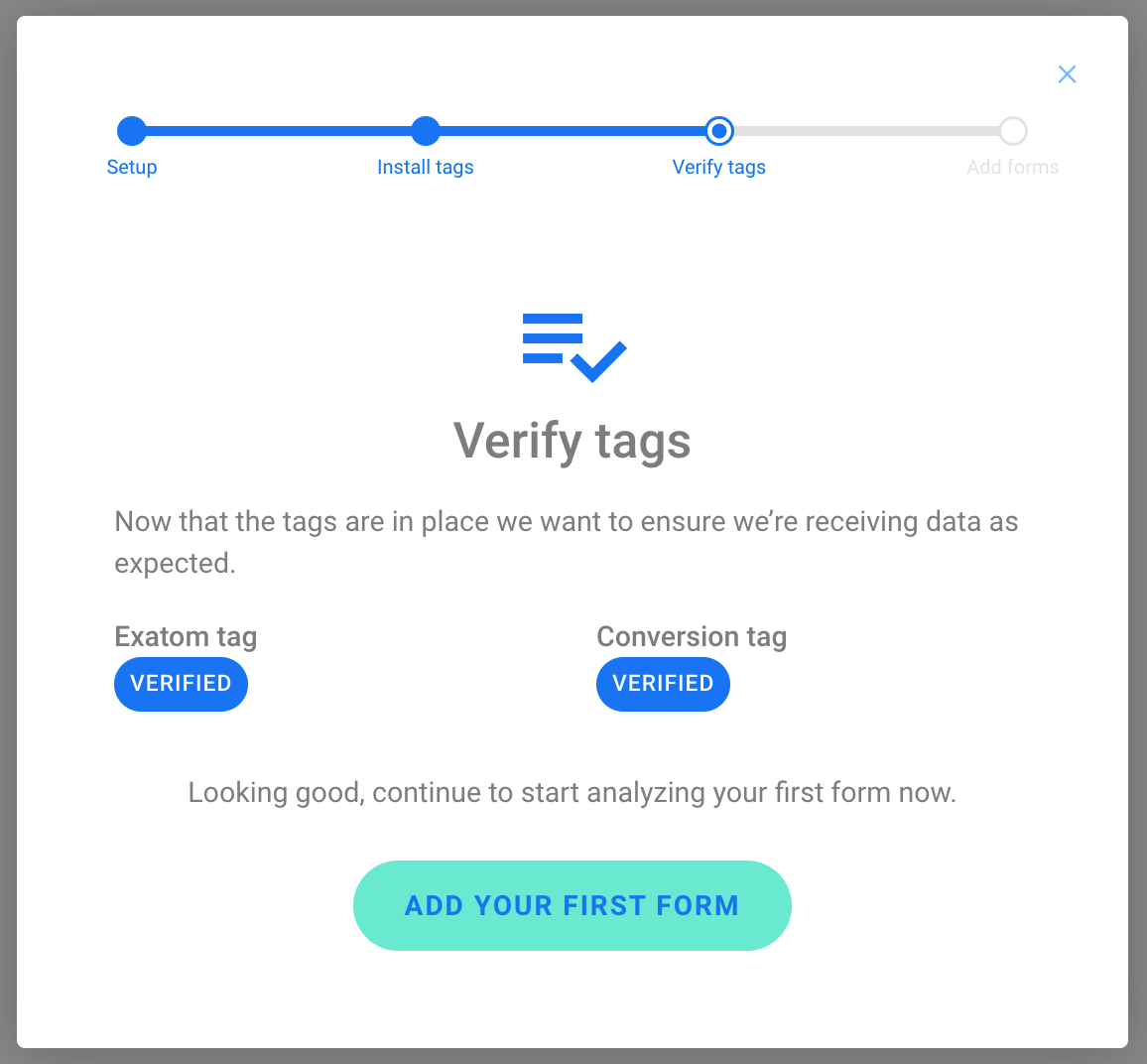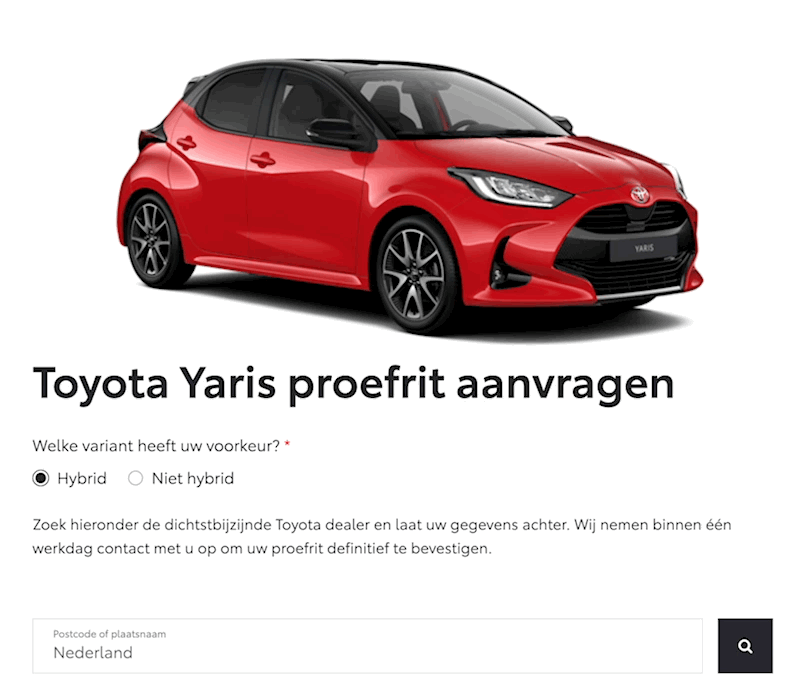
Introduction
When we found Exatom, we bundled a few decades of online marketing experience. This is what helped us build out our webform analytics platform. With Exatom, we go far beyond the standard.
When building out our platform, many questions surfaced: how can onboarding be made as easy as possible? How do we handle bursts of traffic? And if the same form is shown on various pages or is dynamic, how can that be analysed?
Every day, clients ask us critical questions, and new questions pop up in our minds. In a series of blog posts, we’re diving deeper into how we strive for the best experiences and tools for your business.
We dare to be different
At Exatom, we like to stand out. We like the extraordinary. Optimising web forms is an art for our team. These are our ways to be unlike the rest:
We make webform analytics fun
Webforms are often perceived as complex, hard or don’t-dare-to-touch. Like everything we do at Exatom, we like to make things as understandable as possible. Realising this isn’t easy, but we’re here to give you all the insights, features and tools that are needed in order to make your webforms excel. With Exatom, form analytics is accessible to every marketeer, CRO specialist, product owner or web developer.
We’re going the extra mile
For many software development companies, an often-heard expression is: ‘That’s impossible’. We tend to challenge that and find ways to create a matching solution. Often, it’s just a matter of time allocation and perseverance to get to the end. With the right mindset, everything is possible! One of our latest examples is tracking forms that are technically incorrect but still work. Continuous improvement!
We see transparency as a top priority
We don’t have secrets to hide. Our platform is privacy-first, cookieless and transparent on what and how we collect anonymous analytics. All that data is handled with the utmost care, and we’re happy to share how we do that in our data journey.
Our way of re-defining form analytics
As we’ve said, we don’t want to be like the rest. We’re re-defining every aspect of form-analytics
Through a series of blogs, we’d like to take you through all our unique views on features that make your forms shine, for your customers, for you as a CRO specialist or technically as a developer.
In the following six paragraphs, we’ll go over how we’re going the extra mile to ensure tagging is as easy as possible. How simple it can be to add your forms to the platform. How we’re playing nice with your technology stack and how it could be unfair to be cookieless.
Enabling form analytics on your website
We understand that using new technology is not always straightforward, so from start to end, we’d like to make it as easy-as-possible. Add two tags to your tag management system, and you’re done. Yes, it’s that easy and should be! No need to adjust or add tags to your existing forms to allow Exatom to analyse them; it just works out of the box.
To guide you through this initial setup phase, our dashboard shows you a step-by-step process on how to add the tags and most importantly, we’ll give you an indication in real-time if they are installed correctly. No need to get technical expertise or development time from your team. It’s like a no-code platform for enabling form analytics.

Identifying forms you want to analyse
With the Exatom tags live on your website, we’ll continuously look for new forms. So you don’t need to remember where all your forms are located.
- Three clicks are all it takes to select your form and start analysing it.
- Of course, the list of pre-identified forms is sorted by their popularity.
- It’s also an excellent way to see if you have webform similarities and if you could benefit from a consolidation effort to make managing your forms easier.
Dynamic or multi-step forms
Dynamic or multi-step forms are webforms that change in real-time as people fill them out, this to create user centric, intuitive page layouts that display the right information at the right time. Examples could be registration, a sign-up, e-commerce or any other webforms that are significant in size.
Exatom fully supports dynamic forms and fields. We analyse the composition of your form in real-time and adjust our analysis when needed. No need to tag your forms in a specific way or to manually trigger events to make it work. It’s just like any other form!

Handling large amounts of traffic
When we started Exatom, we realised that the amount of anonymous data we would work with would be significant. It could have bursts of traffic, possibly from anywhere in the world. As a result, we operate on technologies and infrastructure that scale automatically and “theoretically” infinitely. This means no delays from us as your technology partner to scale up to your traffic volumes or patterns.
Being technology agnostic
‘Agnostic’ is a word we often use, usually in the context of our technology and how it integrates with your website and applications. We use Vanilla Javascript, meaning we do not rely on external dependencies, technologies or libraries that you also deploy on your website. Another factor in safeguarding your website and ensuring Exatom is compatible with your technology stack.

Tracking forms that are technically incorrect
With modern web technologies, it’s not needed anymore to refresh the page when submitting your form. Possibilities are endless to create beautifully responsive designs that appeal to your customer. One oversight that we often see, is that all input fields are not part of a form container. While technically not needed, it causes some accessibility and usability problems:
- Browsers will see all other input fields on your webpage as part of your main form, even though they are not grouped together visually. For example, your site search or newsletter subscription field becomes part of your account registration form.
- It disrupts or confuses customers with disabilities, who use an assistive device for browsing your website. They will see your form, but other input fields as described above, could be seen as part of your main form and cause issues.
- The autocomplete functionality of such forms will not always work as expected and could lead to data-errors or abandonment.
The unfair advantage of being cookieless
People increasingly realise that online privacy should be a given and not be in the form of an opt-out mechanism. We also see that marketers are changing their mindset and privacy-first solutions receive priority. Nowadays, a cookieless software solution that is not collecting or using personal data has a competitive advantage, especially in the following three areas:
- With cookies disappearing, cookieless software is a future-proof solution.
- The software implementation time decreased because there won’t be complicated by GDPR and DPA processes you have to go through.
- Marketers have realised they can use many marketing tools and gain insights without collecting all the data.
Do you want to get to know more about these items? We’ll tell you more about it in another blog post.
Ending
At Exatom, we like doing things our way, sometimes with a twist. We love critical mindsets and can’t wait to let your webforms perform in the best way possible. Does this all sound interesting to you? Let’s get in touch!
This blog post is one in a series of many. Follow us on LinkedIn and don’t miss any updates on how we stand out from the crowd!
